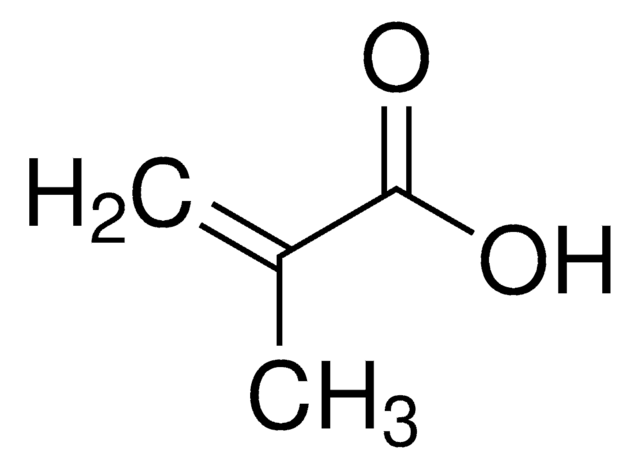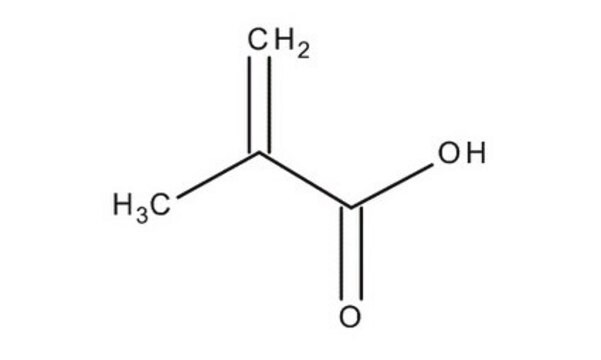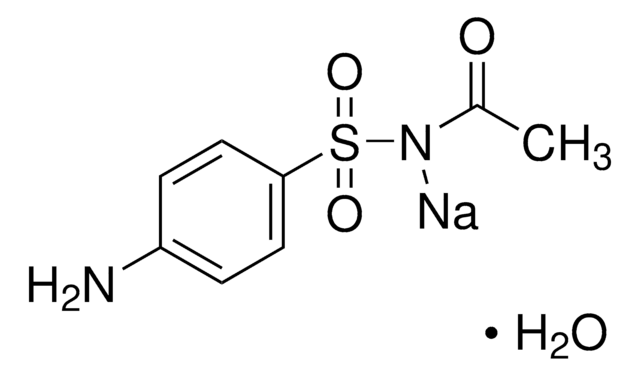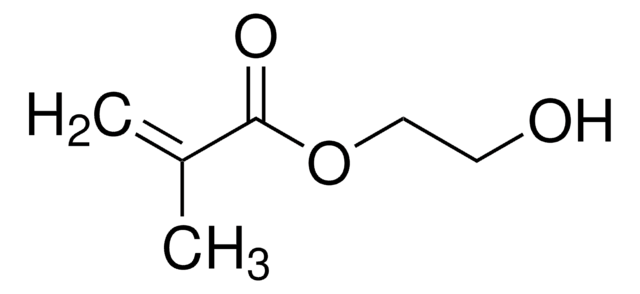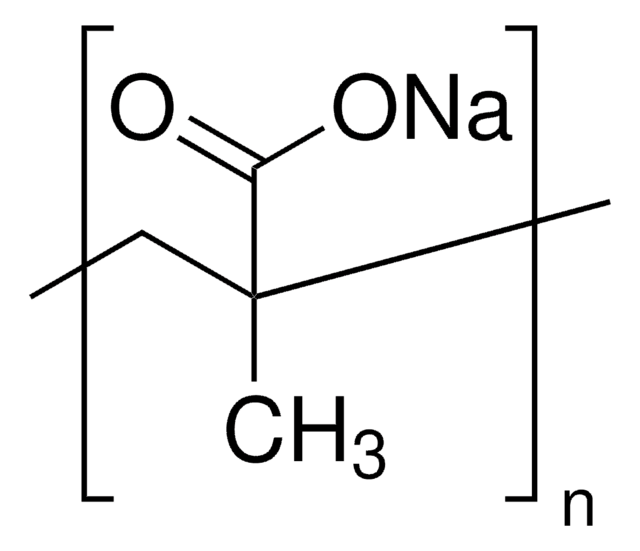19-2110
Methacrylic acid
SAJ first grade, ≥98.0%
Sinonimo/i:
2-Methacrylic acid, 2-Methylpropenoic acid
About This Item
Prodotti consigliati
Grado
SAJ first grade
Densità del vapore
>3 (vs air)
Tensione di vapore
1 mmHg ( 20 °C)
Saggio
≥98.0%
Stato
liquid
Temp. autoaccensione
752 °F
Disponibilità
available only in Japan
Indice di rifrazione
n20/D 1.431 (lit.)
pH
2.0-2.2 (20 °C, 100 g/L)
P. ebollizione
163 °C (lit.)
Punto di fusione
12-16 °C (lit.)
Densità
1.015 g/mL at 25 °C (lit.)
Stringa SMILE
C=C(C)C(O)=O
InChI
1S/C4H6O2/c1-3(2)4(5)6/h1H2,2H3,(H,5,6)
CERQOIWHTDAKMF-UHFFFAOYSA-N
Cerchi prodotti simili? Visita Guida al confronto tra prodotti
Avvertenze
Danger
Indicazioni di pericolo
Classi di pericolo
Acute Tox. 3 Dermal - Acute Tox. 4 Inhalation - Acute Tox. 4 Oral - Eye Dam. 1 - Skin Corr. 1A - STOT SE 3
Organi bersaglio
Respiratory system
Codice della classe di stoccaggio
6.1C - Combustible acute toxic Cat.3 / toxic compounds or compounds which causing chronic effects
Classe di pericolosità dell'acqua (WGK)
WGK 1
Punto d’infiammabilità (°F)
152.6 °F - closed cup
Punto d’infiammabilità (°C)
67 °C - closed cup
Dispositivi di protezione individuale
Faceshields, Gloves, Goggles, type ABEK (EN14387) respirator filter
Scegli una delle versioni più recenti:
Possiedi già questo prodotto?
I documenti relativi ai prodotti acquistati recentemente sono disponibili nell’Archivio dei documenti.
Il team dei nostri ricercatori vanta grande esperienza in tutte le aree della ricerca quali Life Science, scienza dei materiali, sintesi chimica, cromatografia, discipline analitiche, ecc..
Contatta l'Assistenza Tecnica.